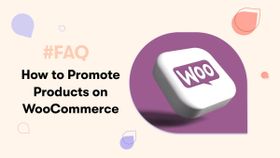[Interview] Andy Crestodina on How to Write the Best Content for eCommerce
Read our interview with Andy Crestodina, a content marketing expert. Learn the best tips and strategies on how to write the best content for eCommerce.
Updated November 21, 2023.
![[Interview] Andy Crestodina on How to Write the Best Content for eCommerce main image](png/617ffbda87b85d76b2646986_maypleandycrestodinainterviewcontentmarketingforecommerce_15e1b97b4bf3af165365d906b9c5bea3_2000--1031005991.png)
Content marketing is one of the most important aspects of any eCommerce brand. Besides the visuals, the written content is what makes your users purchase your product. Content is also what brings you targeted organic search traffic that is ready to buy.
How do you find the best content to put on your product pages? How do you create those long-form guides to draw in that top of the funnel traffic?
For this week's Host the Pro series, we interviewed the brilliant Andy Crestodina, who is a veteran content marketer. He’s the co-founder and CMO of Orbit Media, a content marketing agency, the author of Content Chemistry, and is the co-founder of Content Jam, the largest content conference in Chicago.
Here’s the video of the interview, and the transcript below.
When did you start doing marketing?
I put my two weeks notice for my day job back in December of ‘99. And I was doing quite well at the time. My girlfriend thought I was crazy to quit that job, but I wanted to build websites. I wanted to do digital. I wanted to combine art and science, the creative and the technical. So, I've been doing website planning, eCommerce search optimization, and analytics for 20 years. And I've done content marketing for the last 15 years.
Why content marketing for eCommerce?
There are two very powerful ways in which content supports eCommerce.
The most important way, of course, is to improve conversion rates and to give people sufficient information to take an action. eCommerce is in some ways very special, but in some ways, just very typical of all digital marketing.
Offline, people do not take action until they've had their questions answered and their objections addressed, period. None of us click to buy or pick up the phone and call or sign up, none of these things happen until the person has sufficient information.
So content marketing is a critically important piece to give people enough information and competence and trust. And to know if this is right for them or wrong for them. Content marketing supports conversions. So with every unanswered question on every website hurts conversions.
Focus on the top and bottom of the funnel
Ecommerce platform templates all have the basic information, shipping and price, pictures, reviews, and other generic features. But everyone’s cart, catalog, and products are different. So every audience is different. Therefore we need content to address objections, answer questions, and get the visitor enough confidence to add the product to their cart. That's what I call the “mousetrap”.
The second way in which content supports eCommerce is in the “cheese”. It's in attracting visitors through search optimization. For example, if you have a product that people are not yet sure of, they're not yet aware of your brand, then a comparison page would be a great option.
All of us are on these sites all the time. We're just always asking, looking for information. The brand that wins the contest of generosity by getting all their best ideas and helpful advice out onto the internet in ways that make the content supportive of sales - wins. It is very important. It's very hard to affect business outcomes online without content.
How do you choose the best content to publish?
The first and most important type of content to publish is the stuff that people would ask you. Imagine you had a physical store - what information would a customer need in order to buy? What would stop them from buying? Why wouldn't they buy your product?
Focus on content that answers sales questions. If you don't answer those questions then that person's not likely to buy. It’s really a test of empathy. So you have to really ask yourself -What is in the mind of this visitor? Why wouldn't they take action here? Where are they on this website?
Or even before they land on your site - where are they on the internet? When this question pops into their mind, what is the zero moment of truth?
Just imagine the 15 questions that people would ask and you can use tools to find what people are asking on any topic. Go to answerthepublic.com or SEMrush, or SparkToro. There are all kinds of content tools and audience intelligence tools that will help you find what those questions are.
That’s the bottom of the funnel content, the sales-related content that addresses objections, answers questions, improves clarity and trust on the product detail pages (PDPs). That's the moment when the user has the strongest intent to purchase.
Biggest mistake brands make with content
The worst mistake I’ve seen is when brands put content behind tabs. I can't think of a reason to do that. We have all changed our behavior. We're all very comfortable scrolling. It's not true that people don't scroll. People scroll all the time.
If people didn't scroll, what would Instagram be? But the designer sometimes says - “I put this here in this tab so people can find it if they're interested”. No, no, no. What you did is you hid it until they clicked.
Don’t hide your content. It's far better to make a tall scrolling page that just flows through the psychology of the visitor, even if the add to cart button and the basic specs are at the top. So the common mistake is answering the questions, but obscuring them behind usability features like accordions and tabs. Not a good idea.
What is your top content tip for eCommerce brands?
Focus on visuals more than text because visuals are always higher on the visual hierarchy. It may not be obvious. So I've been part of the planning process for over a thousand websites, we would usually do 60 a year.
There's a visual hierarchy on every page, whether it’s intentional or not. There's a visual hierarchy at every scroll depth of every page. So look at your site with that in mind and ask yourself if the most important messages from the visitor's perspective are also the most prominent messages at that scroll depth.
The visual hierarchy should align with messaging priority. That should be obvious. I don't think it's obvious. It's so critically important. So let's focus on visuals because those are always at the top of the visual hierarchy.
The perfect visual for eCommerce is going to be one that shows the product in use, shows the benefits of the product. It's the action shot, the in-situ photography that makes it real.
If you take a picture of the product without the context, without showing the use of the product, the visitor won’t understand the benefit of using the product. So it's not a hero shot unless it's an action shot. Otherwise, it's just a picture. So hire a content planner that can really help you scale and create content the right way.
Focus on your top product pages first
Go to Google Analytics, look at the top pages, filter for products. You'll find your top 10 products have 10 times the traffic has everything else. They might have a hundred times the traffic of all the other products on your site. Start by prioritizing those pages.
Look at each of those top product pages. Does it have a bullet list at the top? Do they include all the information necessary for that visitor to make a purchase decision? Better yet, go out and ask your customers what they care about and what made them check out.
Andy has worn red socks every day for 20+ years
For example, and I know that this is silly, but I’ve worn red socks every single day since I was 21 years old, I just chose one day to wear red socks. I'm also an environmentalist. So I'm going to buy sustainable red socks. I don't just want to buy any red socks.
I looked online and found a company in Tel Aviv that makes socks out of bamboo. They're super soft. So I am that visitor. I am that buyer. I may not be the typical buyer, but when sustainability is one of those bullet points on the product page and I can see it there, I click and buy 20 pairs of socks at a time.
Once a year, I buy tons of socks. So I bought those socks from Tel Aviv because that was part of their message. If they had excluded that or if they didn't make it prominent enough for me to see, I wouldn't have bought them. I would have kept looking. So it's, that's a question of visual hierarchy. In this case, it’s the order of bullets aligning with messaging priority.
Sustainability is part of the value proposition that for make that prominent, these are sustainably made from bamboo. I don't know how they do it but somebody's making socks out of bamboo and they're awesome.
I'm an advocate now, why did that happen? It's because they aligned their content with my top concerns on the product page. I'm going to buy my red socks from this company every time.
Move up the marketing funnel
Another great tip for content marketers is - start with writing conversion-focused content, which we need to prioritize after you've optimized all of your top pages for conversions and you've run out of those quick wins, the low-hanging fruit, then move upwards through the funnel toward the search-friendly content.
Write content for visitors that have a lower intent. If you're going to improve an eCommerce site, start at the very bottom, the checkout, then move up to the cart. If there are any problems with the cart, fix those. Then we can click on a detail page, then move up to the product category page.
This is the order in which we should all be working on because there are already visitors on your cart page right now, right? Don't go write a search-optimized guide about picking socks until you fix the problems in your cart. So work backward, upwards through the funnel. And that's why I emphasize the importance of conversion-focused content on the product detail pages.
Focus on the consumer
In the end, it’s not about the brand, it’s about the consumer. What does this person care about? It's our job to help them. As I said, content marketing for eCommerce is a test of generosity. We're trying to give away the most helpful, useful advice for that person at that moment, based on their needs.
Our job is to meet their expectations. Satisfy for those information needs, solve for X. If you don't do that, you're just going to see higher bounce rates and lower conversion rates.
Enjoyed the interview? Check out all of our Host the Pro interviews on our YouTube channel.





![[Interview] Neal Schaffer on How to Build Relationships with eCommerce Influencers](png/6194d6b0ff9b9cf0daf35978_1201117809151689mayple1920x1080mar1_02_8817e554b079ec2ed8ac2e7bb0743c8c_2000-1699776049691.png)



